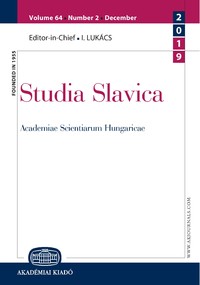Славянские устойчивые сравнения с персонажами Библии в диалектах
Slavic Fixed Similes with Biblical Characters in Dialects
Author(s): Irina Vladimirovna KuznetsovaSubject(s): Eastern Slavic Languages
Published by: Akadémiai Kiadó
Keywords: Slavic languages; phraseography; dialectal phraseology; fixed similes; biblical characters; regional identity; functioning; etymology
Summary/Abstract: The present paper deals with the functioning of phraseological comparative constructions with biblical characters in dialects of East, West, and South Slavic languages. The charac- ters of the Holy Scripture include not only the nameless and named heroes of the Bible but also the Creator himself as well as supernatural beings that serve or oppose the Creator. The description involves comparative phraseological units with an adjective that derives from a character of the Bible. Most of the analyzed Slavic dialectal phraseological units are fixed in dictionaries. The description of comparative phraseological units (if possible) is carried out from the positions of structural and semantic modelling, which allows to identify the lexical variation of components in the dialects of the same language or in various languages. In some cases, the paper includes areal characteristics of comparative constructions. For this purpose, the author shows their parallels in other linguistic and dialect regions. As a result, the paper reveals both structural and semantic biblical universals and phraseological units with national specificity, i.e. similes that have no equivalents (literary or non-Slavic). There are units that are specific for some regions, for example, phraseological units containing microtoponyms such as geographical objects that are not widely known. The national and regional identity is manifested both at the level of figurative basis and at the level of non- equivalent comparativism since some subjects can be active in one language, while they are peripheral or lacunary in another one. In some cases, phraseological units are provided with cultural, historical, and etymol- ogical comments which reveal not only the biblical and religious roots but also reflect the ancient mythological representations of the Slavs. The author gives an explanation to the meaning of similes and their components. The Old and New Testaments are a common element of the spiritual culture of Chris- tians so the comparison reveals the similarity and repetition of comparative units, directly or indirectly related to the names of the characters of the Bible, or structural and semantic models in a particular area. At the same time, the phraseological units genetically ascending to the Bible show a quite large differentiation, demonstrating the peculiarity of the recep- tion of biblical images by the Slavs, the unequal interest in them. Although the very name of the biblical character is often international, set similes containing it are not always the same. This is usually the case for pseudo-biblical phraseological units that have no direct links to the character of the Bible; they are usually inherent in folk speech and are often jokingly ironic. This is particularly evident in dialects.
Journal: Studia Slavica Academiae Scientiarum Hungaricae
- Issue Year: 64/2019
- Issue No: 2
- Page Range: 343-356
- Page Count: 14
- Language: Russian
- Content File-PDF

